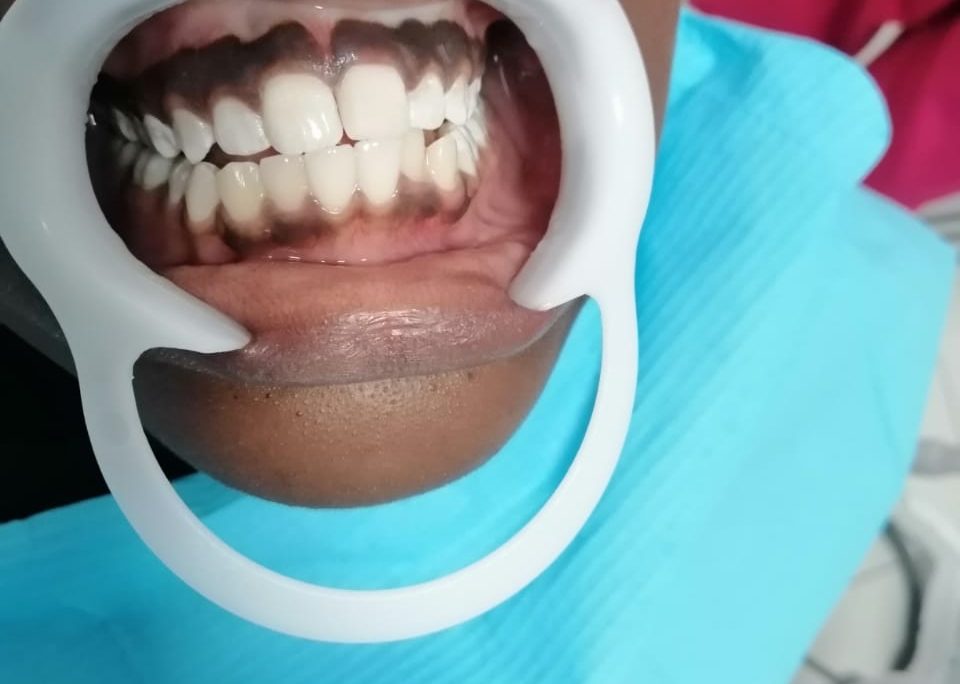GUM DISEASES
Gum diseases are collections of diseases that present with inflammation of gums often due to infection of the gums. Infection arises due to lack of/ poor brushing of teeth and flossing that allows plaque to build on the surface of the teeth.
Causes of gum diseases
Think of an open wound, now imagine it constantly dirty, what happens to it? Does it ever heal? Or does the situation worsen, the wound swells further and even develop puss. The same applies to the gums lack of/poor brushing of teeth and failure to floss allows plaque to build on the surface of the tooth. Plaque host numerous bacteria species. These bacteria try to get into the gum but the gum mounts an immune response against it thus leading to the subsequent inflammation of the gums.
There are other risk factors for gum diseases like smoking which suppresses the immune response making the gum much more susceptible. Others include diabetes, hormonal changes in females during puberty or pregnancy, medication that reduces the flow of saliva, diseases that suppress immunity e.g., HIV,diabetes
Symptoms of gum diseases
Bad breath that won’t go away
Red and swollen gums
Bleeding gums
Pain on chewing
Loose teeth
Sensitive teeth
Receding gums or longer appearing teeth
Types of gum diseases
Gum diseases as a result of poor oral hygiene are divided into two:
Gingivitis
Periodontitis
The distinction between the two is often marked by the involvement of bone. Let’s dive deeper into this. We talked about there is an immune response mounted against the bacteria in the plaque. If the bacteria continue invading the gum and goes deeper and deeper, the inflammatory reaction happening there tends to cause the bone right below the gum that supports the teeth to be ‘eaten up’. This often results in receding gum lines, longer appearing teeth and also the teeth begin to loosen.
‘Eating up’ of bone is what marks the transition from gingivitis to periodontitis. How do we determine whether there is involvement of bone? With the aid of x-rays. On the x-ray we see a reduction of the bone level in periodontitis.
How do we treat gum diseases?
Treatment begins by determining what factors are making you susceptible to the gum diseases. Is it poor oral hygiene? Do you smoke? Do you have any illnesses or are you taking any medication that is making you susceptible to gum diseases?
Once this is determined it is dealt with to prevent recurrence of the gum diseases after the treatment. Poor oral hygiene by giving oral health instructions and patient education. Smoking by smoking cessation advice. For illnesses and medication, we’ll refer you to a physician for further advice.
The next step usually is dealing with the plaque and tartar on the teeth. We do this by full mouth scaling, Full mouth scaling involves a special instrument which jets out water at very high speeds. This is then directed to the tartar on the teeth and dislodges them from the teeth leaving a clean tooth surface.
The surfaces are then polished to smoothen any irregularities that may be as a result of dislodging of the tartar thus the surfaces are smooth and clean.
It is important to note that sensitivity may be a complaint post cleaning. Especially when the tartar is so much. We deal with this by applying a special fluoride gel on the tooth. This gel helps remineralize the tooth surface thus reducing the sensitivity. We also prescribe a desensitizing toothpaste that you can continue using at home to aid in this process.
Other treatment options we offer on top of the cleaning are antibiotic treatment if there were signs of a bad infection, analgesia to reduce the sores on the gums and splinting of teeth in case they were loose.
Conclusion
You can prevent gum diseases and keep your gums healthy by:
Brushing your teeth at least twice a day with a fluoride toothpaste
Flossing regularly and appropriately. Click here to learn more about flossing.
Quitting smoking
Visiting us regularly for a checkup and professional cleaning.















